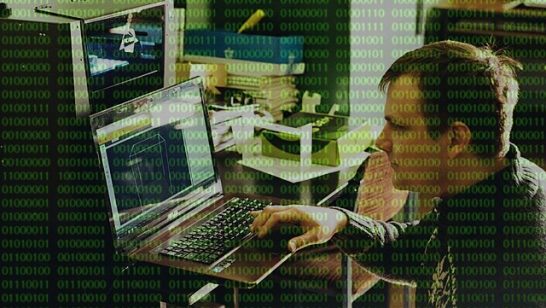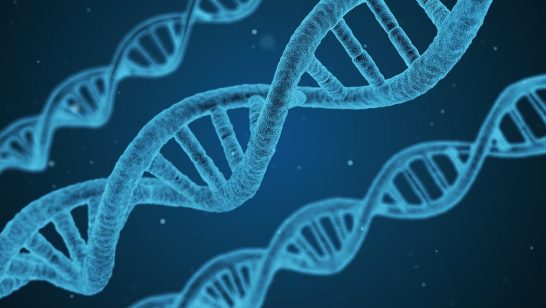
The convergence of artificial intelligence and biotechnology is producing novel threats which pose an existential risk both to specific demographic groups and the population at large. Alongside this, the Biological Weapons Convention Implementation Support Unit, which has a role in coordinating mitigation measures, is severely under-resourced. This demands urgent rectification.
Artificial intelligence (AI) is enabling us to finally understand biology, in all of its complexity. This, in turn, allows us to harness billions of years of evolution to solve some of humanity’s most pressing challenges; from curing previously uncurable diseases to the phasing out of fossil fuels.
With this massive potential for positive impact comes large, novel threats. Threats which could ultimately wipe out the whole of humanity. For brevity, this commentary only explores the increasing scale, democratisation and specificity of bioweapons enabled by AI; it explores three of the most pressing mitigations and calls on governments to overcome the stagnancy in this space and take urgent action.
Artificial intelligence (AI) is enabling us to finally understand biology, in all of its complexity. This, in turn, allows us to harness billions of years of evolution to solve some of humanity’s most pressing challenges; from curing previously uncurable diseases to the phasing out of fossil fuels. Rebecca Donaldson
AI has long been used for drug discovery – where a therapeutic molecule is searched for with the lowest toxicity possible. When a team of scientists flipped this parameter to instead optimise for toxicity, the algorithm generated not only VX (one of the most potent poisons in existence) but also novel toxins which were predicted to be more toxic. Alongside toxicity, AI can also enhance the transmissibility of a virus – and this is often done in laboratories researching pandemic viruses. If one were to imagine the transmissibility of COVID-19 with the death rate of Ebola, it’s clear why the ever-increasing harm potential of bioweapons represents an existential risk.
AI can also be used to simulate the spread of pandemics – which is a useful tool in optimising quarantine measures and allocating testing resources. However, this can also be reversed for optimising the spread of a pathogen, thus scaling its harmful impact.
The advent of large language models (LLMs) such as ChatGPT is democratising skills that used to take a long time to learn. In a recent paper, students in a class at MIT used chatbots to suggest four likely pandemic pathogens, explained how to generate them, supplied companies who were unlikely to screen orders and recommended that if they lacked the skills to implement this, that they engage a contract research organisation; they managed to do all of this in only one hour. This democratisation widens accessibility to bioweapons, making it available to smaller organisations with fewer resources, such as terrorist groups.
This democratisation widens accessibility to bioweapons, making it available to smaller organisations with fewer resources, such as terrorist groups. Rebecca Donaldson
Democratisation extends beyond the use of large language models, with various initiatives set up to decrease the cost and skills barriers to accessing biotechnology. These initiatives include community laboratories, DIY biohacking communities and cloud laboratories which perform experiments remotely. The advent of DNA printers is set to democratise the synthesis of DNA, which has already dramatically reduced in price (and therefore accessibility) over the past 5 years. Even if these DNA printers have measures to prevent the synthesis of potentially dangerous DNA, they could still be hacked or security measures overcome by bad actors.
Finally, the specificity with which bioweapons can target specific demographics is increasing as further developments (eg. cell and gene therapy) are made in the pursuit of precision medicine (the tailoring of medical treatment to an individual). This poses existential threats to particular groups of people, facilitating persecution and potentially even genocide.
In this article, I will recommend several urgent measures for beginning to mitigate these existential threats: resource the biological weapons convention, create an Emerging Technology Utilisation and Response Unit (ETURU) and create a culture of AI assurance and responsible democratisation of biotechnologies.
The Biological Weapons Convention (BWC) has no formal verification mechanism, unlike that of nuclear or chemical threats. The BWC Implementation Support Unit has only 3 permanent employees and a budget smaller than the average McDonald’s store. This is clearly insufficient in comparison to the magnitude of the risk and potential negative impact and it’s recommended that this is urgently rectified by governments collaborating with UNODA.
An Emerging Technology Utilisation and Response Unit would bring together the relevant experts, stakeholders and technologies to harness the potential of new technologies for security whilst minimising the potential for harm. Rebecca Donaldson
Secondly, the convergence of AI and biotechnology are posing novel, large threats but these two aren’t the only technologies that come together to present novel threats. For example, digital technologies that interface with the biomanufacturing value chain or food system are routes of potential attack.
On the flip side, AI can be used to help prevent and mitigate against bioweapons, for example generative AI can generate novel toxins and pathogen strains that can then be added to the existing blacklist – thus pre-empting potential attacks by bad actors.
Maintaining up-to-date information on emerging technologies, plus understanding how to use them to detect and mitigate bioweapons requires interdisciplinary expertise and real-time data. Whilst various initiatives are in place to bring stakeholders together and disseminate knowledge, (eg. NTI Biological and its recently launched International Biosecurity and Biosafety Initiative for Science), there is still a need for a centralised global authority on the matter to gather real-time data. An Emerging Technology Utilisation and Response Unit would bring together the relevant experts, stakeholders and technologies to harness the potential of new technologies for security whilst minimising the potential for harm. This could exist within the BWC Implementation Support Unit, provided the resourcing to this is increased considerably to enable a new team to be hired and relevant technologies and software developed.
Collaboration between policymakers, technologists, regulators, civil society organisations and experts from a variety of disciplines is also crucial in responding to this rapidly evolving threat. Rebecca Donaldson
Alongside these top-down mitigations, I would encourage a bottom-up biology community culture of responsibility. This includes the scaling of existing education initiatives for synthetic biologists on security considerations, vigilance against misusing technologies, encouragement to evaluate potential harmful dual uses of new technologies and AI assurance (the set of practices, processes and tools used to ensure that AI systems operate safely, reliably and as intended).
In the end, a variety of mitigation measures across a spectrum of punitive to incentivising, cautious to liberal are required. Collaboration between policymakers, technologists, regulators, civil society organisations and experts from a variety of disciplines is also crucial in responding to this rapidly evolving threat. Many attempts have been made to strengthen the BWC and there are a variety of multi-stakeholder initiatives doing valuable work in this space. Indeed, in March 2023, after decades of stagnation, there is a renewed effort to strengthen the BWC. Nonetheless, there is a critical gap: the willingness of various governments to engage, support and strengthen the Biological Weapons Convention. This cannot continue. The difficulties brought by the COVID-19 pandemic and the current geopolitical situation could be seen to decrease the priority of this work, but in actual fact, they increase the importance of it. Policymakers need to stand up and take urgent action, or they may not be around to regret it.
The opinions articulated above represent the views of the author and do not necessarily reflect the position of the European Leadership Network or all of its members. The ELN’s aim is to encourage debates that will help develop Europe’s capacity to address the pressing foreign, defence, and security policy challenges of our time.
Image credit: Wikimedia Commons / U.S. Navy photo by Chief Photographer’s Mate Chris Desmond.



